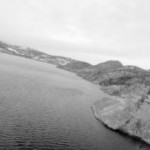The Okanagan basin is a vulnerable landscape when it comes to protection of drinking water at its source, according to the head of operational planning and policy in the Environment Ministry.
Valerie Cameron was in Kelowna Thursday to speak to members of the Okanagan Water Stewardship Council about source protection of water in B.C.
She explained that the Okanagan has unstable slopes; sparse vegetation and erosion problems; a dry climate; and its watersheds are mainly Crown-owned land with a multitude of uses. Plus, there’s exponential growth in population, which has a tremendous impact on water sources.
And, then there’s the issue of climate change and how that’s going to impact it.
She feels local government has a role to play in dealing with some of the issues and meeting some of the challenges.
Those challenges include the multitude of players who have an interest in water. “You need clear leadership,” she said.
There is a “disconnect” between water suppliers’ responsibilities and source protection of water, she added.
On the other hand, she said, there has never been a more water-aware public. “Even industry is responding to the interest,” said Cameron.
She also pointed to the stewardship council and said there’s a “tremendous opportunity with this group for environmental education.”
Cameron wondered aloud whether purchasing some of the land in order to ensure protection of water sources should be considered.
She also noted that it may be possible to bring back watershed leases, which were eliminated in the 1970s.
The two largest water utilities in the province, Vancouver and Victoria, both manage watersheds which are completely protected from other uses.
They operate with 999-year leases on Crown land, at a cost of $1 a year.
“It’s all about control of land,” she commented.
In total, 94 per cent of B.C. is Crown land with multiple land use tenures, while only five per cent is privately owned and one per cent is federal.
In the Okanagan, most of the watershed is Crown land, with multiple uses stacked on top of one another, she noted.
There are few provisions in the Water Act for water quality protection. It’s not even a requirement for a water licence. That’s up to the health ministry, she said.
In all there are 461 community watersheds in B.C.
Cameron talked about some of the many acts that have legislation affecting source water protection, including the Drinking Water Protection Act, the Water Act, Forest and Range Practices Act, Environmental Management Act and the Land Act.
Under the forest act, the industry is now results-based rather than regulated so a problem has usually occurred before it’s noticed.
In the Land Act there are sections that allow government to set aside watershed reserves or to put notations on property. She said that might provide a vehicle for some watershed protection.
However, she said community-led plans might make the most sense for the Okanagan, using collaboration rather than regulations.
In the coming years, she noted that the mountain pine beetle will be responsible for the single biggest modification of the landscape since the last ice age, and water users will certainly be impacted.

